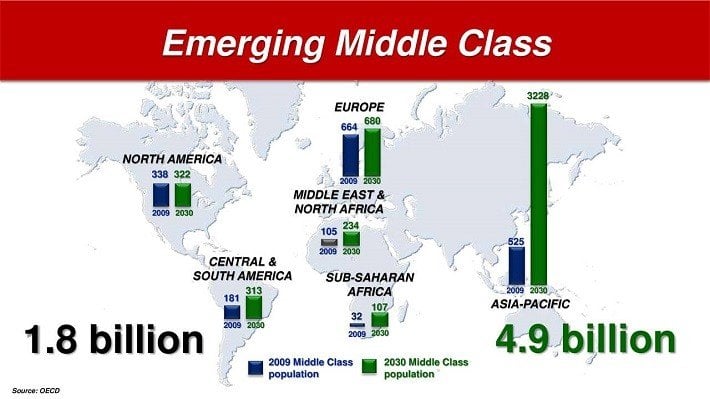Investors looking for the highest-quality dividend growth stocks, should consider companies with the longest history of dividend growth. The Dividend Kings are a select group of 25 stocks, with 50+ consecutive years of dividend increases. You can see all the Dividend Kings here.
ValueWalk readers can click here to instantly access an exclusive $100 discount on Sure Dividend’s premium online course Invest Like The Best, which contains a case-study-based investigation of how 6 of the world’s best investors beat the market over time.
Click here to download my Dividend Kings Excel Spreadsheet now. Keep reading this article to learn more.
Click here to access our Members Area where you can easily download all our Excel databases in one place.
Colgate-Palmolive (CL) has paid uninterrupted dividends since 1895, and it has increased its dividend payments for the past 56 consecutive years. It is a member of the Dividend Aristocrats, a group of 53 companies in the S&P 500 Index, with 25+ consecutive years of dividend increases. You can see all 53 Dividend Aristocrats here.
This article will provide an in-depth review of Colgate-Palmolive’s fundamentals, valuation, and future outlook.
Business Overview
Colgate-Palmolive traces its roots all the way back to 1806. It was founded by William Colgate, who started a starch, soap, and candle business in New York City. The company has been in business for more than 200 years.
Today, Colgate-Palmolive manufactures oral care products like toothpaste, personal care products such as soap, home cleaning products, and pet food. Its major brands include Colgate, Palmolive, Hill’s Science Diet, and more.
Source: 2018 CAGNY Presentation, page 4
On January 26th, Colgate-Palmolive released its fourth-quarter earnings report. Revenue missed analyst expectations by $40 million, while earnings-per-share matched expectations. Organic sales, which excludes non-recurring factors like currency exchange rates, rose 2% for the fourth quarter. This was below analyst expectations for 2.9% growth.
Global unit volume increased 3%, but pricing fell 1% for the quarter. Earnings-per-share growth was also challenged from higher cost inflation. Gross margin was 60.4% last quarter, compared with 60.8% a year ago. The consensus analyst estimate was for 61.0%. Higher raw materials and packaging costs weighed on margins, while SG&A expense rose 160 basis points for the quarter.
For 2018, Colgate-Palmolive expects net sales growth in the mid-single digits, with organic sales to be up in the low to mid-single digit range. The company expects organic sales growth to be driven by a mix of pricing gains and volume growth. To combat higher raw materials costs, Colgate-Palmolive is also launching a company-wide productivity initiative, to help reduce expenses. The company expects gross margin to rise 75 to 125 basis points in 2018 as a result, which will help Colgate-Palmolive continue to grow earnings and dividends.
Growth Prospects
One of Colgate-Palmolive’s most important growth catalysts is international growth, particularly in emerging markets like China, where Colgate-Palmolive has built a strong presence. Colgate-Palmolive has the #1 position in China, with market share above 30%. More than half of the company’s annual sales come from developing markets.
Source: 2018 CAGNY Presentation, page 75
Emerging markets are extremely attractive for U.S. consumer products companies like Colgate-Palmolive. Emerging markets like China, India, and many others, have large populations, and are experiencing rapid economic growth. For example, last quarter, Colgate-Palmolive’s organic sales rose 1% in North America, while organic sales in Asia Pacific and Latin America increased 2.5%. Volume in India was up double-digits last quarter.
This should provide a long-lasting growth tailwind for Colgate-Palmolive.
By 2030, the global middle-class population is expected to explode, and most of the growth will be in the developing world. While the U.S. population is expected to remain relatively stable, populations are expected to rise significantly in Asia-Pacific, the Middle East, Central and South America, and Africa.
Another growth catalyst is price increases.
Source: 2018 CAGNY Presentation, page 60
Raising prices each year has historically been a major driver of Colgate-Palmolive’s revenue growth. As you can see in the above image, the company has had success in driving through price increases on an annual basis. The ability to raise prices each year indicates a strong brand.
Competitive Advantages & Recession Performance
Colgate-Palmolive has many competitive advantages which have fueled its growth over the past 200 years. First, it has built a dominant position in its core product categories, most notably in toothpaste and toothbrushes.
For example, in toothpaste, Colgate-Palmolive’s market share has risen steadily for many years. Today, it commands a higher market share than the next-three biggest competitors combined.
Such high market share allows Colgate-Palmolive to charge higher prices for its premium products, and raise prices over time. Pricing power is a critical competitive advantage for consumer goods stocks.
Another major advantage for Colgate-Palmolive is that the company sells products which are necessities of modern life. Consumers need oral, personal, and pet care products to ensure good health. Colgate-Palmolive enjoys steady demand, which gives the company consistent profitability, even during recessions.
Colgate-Palmolive’s earnings-per-share through the Great Recession are shown below:
- 2007 earnings-per-share of $1.69
- 2008 earnings-per-share of $1.83 (8.3% increase)
- 2009 earnings-per-share of $2.19 (20% increase)
- 2010 earnings-per-share of $2.16 (1.4% decline)
Colgate-Palmolive generated positive earnings growth in 2008 and 2009, during the worst years of the recession. The company even achieved 20% earnings growth in 2009, which not many companies were able to do. Earnings dipped slightly in 2010, but resumed growing in 2011 and thereafter.
The company’s strong performance from 2007-2010 is a credit to its strong business model and powerful brands. These qualities make Colgate-Palmolive a very recession-resistant business.
Valuation & Expected Returns
Colgate-Palmolive reported adjusted earnings-per-share of $2.87 in 2017. Based on this, the stock trades for a price-to-earnings ratio of 24.6. This is slightly above its 10-year average price-to-earnings ratio, which is 23.8 according to ValueLine.
Source: Value Line
Given Colgate-Palmolive’s struggles to generate earnings growth in recent years, the stock is not likely to experience further expansion of the price-to-earnings ratio. Instead, future shareholder returns will be fueled primarily by earnings growth and dividends.
A potential breakdown of future returns is as follows:
- 3%-4% revenue growth
- 1%-2% share repurchases
- 2.4% dividend yield
Even with modest expectations of mid-single digit earnings growth, the stock can still return 6% to 8% per year, once dividends are included. Earnings growth will be boosted by share repurchases. And, Colgate-Palmolive recently increased its dividend by 5%, to $0.42 per share on a quarterly basis. The annual dividend of $1.68 per share represents a forward yield of 2.4%.
Final Thoughts
Colgate-Palmolive is a high-quality business, with several category-leading brands. The company has growth potential, through product innovation and in the emerging markets. And, it is a recession-resistant company that should outperform during a recession.
The stock is not significantly undervalued, but premium companies typically earn premium valuations. Now might not be the best time to buy shares of Colgate-Palmolive, as the stock appears to be fairly valued. Still, investors can count on steady dividend increases each year from this Dividend King.
Thanks for reading this article. Please send any feedback, corrections, or questions to [email protected].
Article by Bob Ciura, Sure Dividend
ValueWalk readers can click here to instantly access an exclusive $100 discount on Sure Dividend’s premium online course Invest Like The Best, which contains a case-study-based investigation of how 6 of the world’s best investors beat the market over time.















